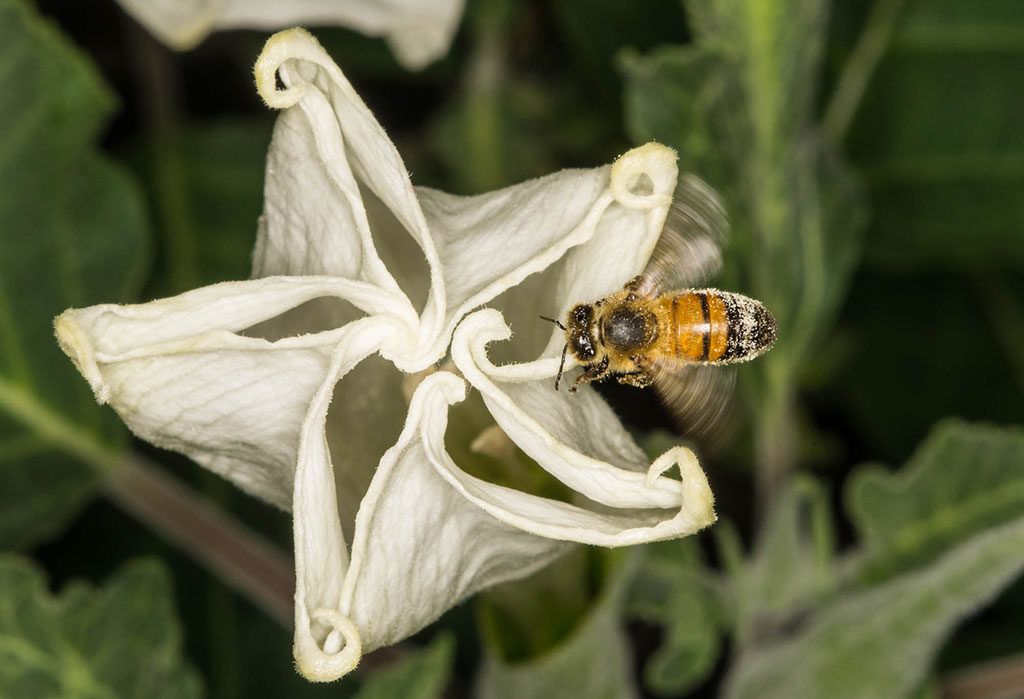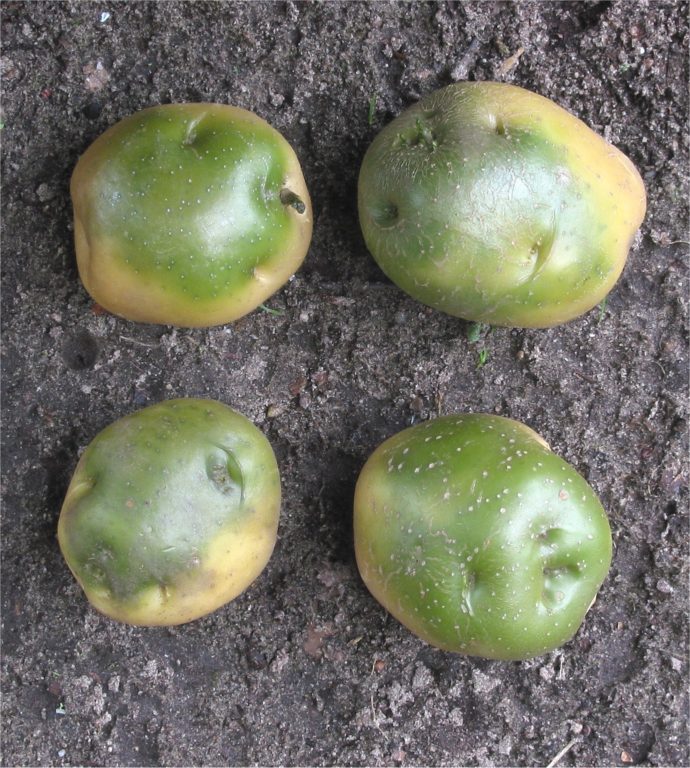More than fifty shades of night

Some peppers may be hot enough to make you think you’re poisoned, but they, and many other common vegetables, are in the nightshade family. Photo of the Day archive: Hollis Easter, Potsdam NY.
Many nightshades are safe and delicious and go well in sandwiches and sauces. A few are deadly, dished up mainly by criminals, but most occupy a gray area between these two extremes. Worldwide, there are around 2,700 species in the nightshade family, known as solanaceae to Latin geeks. The group comprises tasty crops like tomatoes, potatoes, eggplant, peppers, and tomatillos. It is also composed in part by shady characters such as jimsonweed and deadly nightshade which have wrought mayhem and death, both accidental and intentional, throughout history.
Nightshades are present on every continent except Antarctica, though Australia and South America have the greatest diversity, and overall numbers, of species. Tobacco is one of the most economically important nightshades, while other family members, for example petunias and Chinese lanterns, spice up our yards. The majority of nightshades are wild species, some of which have been used as sources of medicine for millenia.
It seems that the word “sumac” is preceded by “poison” in the minds of many folks, which is sad because all the sumac we see on roadsides and in fencerows are perfectly harmless. Poison sumac, which grows in standing water, is a glossy-stemmed shrub with drooping white berries. It can cause a poison ivy-like rash, but is an uncommon species. To an even greater extent, everyone assumes the term “nightshade” always comes after the word “deadly.”
Obviously, part of the problem is one of branding. The “real” deadly nightshade (Atropa belladonna) is worthy of its name. A single berry can be fatal to a child, and 8-10 berries or just one leaf is enough to kill an adult. Accidental poisonings may occur because the deeply hooded purple berries taste sweet, and may be consumed by kids or adults. The plant has also been used deliberately as a way to kill political foes and unfaithful spouses. In at least one case, a whole garrison of soldiers was wiped out by sweet wine spiked with A. belladonnaberry extract (helpful hint: do not accept drinks from enemy kings or other people you do not know well).

Datura, aka jimsomweed, mad apple and devil’s apple – pretty – but on the shadier side of nightshade. Photo of the day archive: Vici and Steve Diehl, Antwerp, NY
However, deadly nightshade prefers temperate or subtropical climates, and is not known to occur in northern NY. What we commonly call “deadly nightshade” is the native, red-berry bittersweet nightshade (Solanum dulcamara), the seeds of which are very slightly toxic. But we do have a dangerous nightshade, jimsonweed (Datura stramonium), also known as devil’s apple or mad-apple. All parts of the plant are toxic, but especially the seeds. Native to Mexico and Central America, this coarse annual weed has very long, white, funnel-shaped flowers and bizarre-looking spiny pods, and can be found infesting pastures and barnyards throughout North America.
All nightshades contain some amounts of atropine, scopolamine, and other compounds which in minute quantities have medical uses, but are extremely dangerous at larger doses. Within very narrow limits, these chemicals have also be used recreationally. Tragically, some poisonings are a result of people consuming A. belladonna, D. stramonium, and other nightshades with especially high concentrations of such chemicals in the mistaken belief they can get high. A plant in one location may be many times as toxic as the same species growing on a different site, and there is no way outside of lab analysis to tell.

The common potato is in the nightshade family and can become toxic if exposed to too much light. You can tell id a potato’s skin and flesh has become green. Photo: Rasbak, Creative Commons, some rights reserved
In northern South America, especially Colombia, criminals use an extract from several tree-form nightshade species in the genus Brugmansiaon their victims to commit rapes and robberies. Seeds from Brugmansiaspecies have high levels of scopolamine, a sedative which causes retrograde amnesia—a person given such an extract would not recall events before or after they were poisoned—as well as delirium. (Please refer to that earlier line about not drinking with strangers…)
Potatoes which have been exposed to light will turn green, indicating that toxins like solanine have been created as a defense. The danger is small, but to be on the safe side these should be discarded. The chemicals penetrate into the flesh, and removing the green portions is not enough to eliminate the risk to infants or the elderly. Likewise, there is little danger in consuming a small amount of tomato or potato leaf, but where children are concerned, refer all questions to a poison-control center.
They say you shouldn’t paint any large, diverse group with the same brush, presumably because the bristles would wear out before you could finish. So enjoy your vegetable nightshades, but steer clear of the shady ones.
Paul Hetzler is a horticulture and natural resources educator with Cornell Cooperative Extension of St. Lawrence County.
Tags: botany, food, nature, toxic plants







